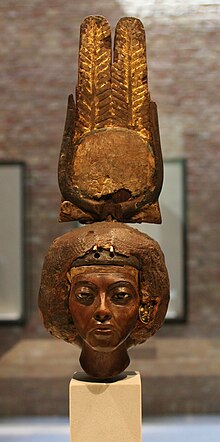
Memphis, or Men-nefer, was the ancient capital of Inebu-hedj, the first nome of Lower Egypt that was known as mḥw ("North"). Its ruins are located in the vicinity of the present-day village of Mit Rahina, in markaz (county) Badrashin, Giza, Egypt. This modern name is probably derived from the late Ancient Egyptian name for Memphis mjt-rhnt meaning "Road of the Ram-Headed Sphinxes".
Sobek was an ancient Egyptian deity with a complex and elastic history and nature. He is associated with the Nile crocodile or the West African crocodile and is represented either in its form or as a human with a crocodile head. Sobek was also associated with pharaonic power, fertility, and military prowess, but served additionally as a protective deity with apotropaic qualities, invoked especially for protection against the dangers presented by the Nile. Sobek has been famed for having been revered by the first female Pharaoh by the Nebty name Sat-Sekhem-Nebet-Tawy Sobekneferu, present both in the female Pharaoh's nomen, Sobekneferu, and her praenomen Kasobekre.

Saqqara, also spelled Sakkara or Saccara in English, is an Egyptian village in the markaz (county) of Badrashin in the Giza Governorate, that contains ancient burial grounds of Egyptian royalty, serving as the necropolis for the ancient Egyptian capital, Memphis. Saqqara contains numerous pyramids, including the Pyramid of Djoser, sometimes referred to as the Step Tomb, and a number of mastaba tombs. Located some 30 km (19 mi) south of modern-day Cairo, Saqqara covers an area of around 7 by 1.5 km.

Usermaatre Meryamun Ramesses III was the second Pharaoh of the Twentieth Dynasty in Ancient Egypt. He is thought to have reigned from 26 March 1186 to 15 April 1155 BC and is considered to be the last great monarch of the New Kingdom to wield any substantial authority over Egypt.
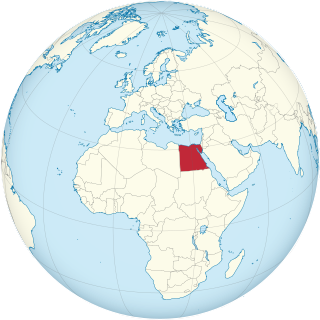
Articles related to Egypt include:

The Museo Egizio or Egyptian Museum is an archaeological museum in Turin, Italy, specializing in Egyptian archaeology and anthropology. It houses one of the largest collections of Egyptian antiquities, with more than 30,000 artifacts, and is considered the second most important Egyptological collection in the world, after the Egyptian Museum of Cairo. In 2019, it received 853,320 visitors, making it one of the most visited museums in Italy.

Usermaatre Heqamaatre Setepenamun Ramesses IV was the third pharaoh of the Twentieth Dynasty of the New Kingdom of Ancient Egypt. He was the second son of Ramesses III and became crown prince when his elder brother Amenherkhepshef died aged 15 in 1164 BC, when Ramesses was only 12 years old. His promotion to crown prince:
is suggested by his appearance in a scene of the festival of Min at the Ramesses III temple at Karnak, which may have been completed by Year 22 [of his father's reign].

The Egyptian Museum of Berlin is home to one of the world's most important collections of ancient Egyptian artefacts, including the iconic Nefertiti Bust. Since 1855, the collection is a part of the Neues Museum on Berlin's Museum Island, which reopened after renovations in 2009.
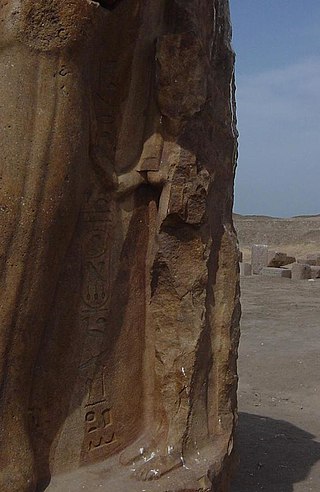
Maathorneferure was an ancient Egyptian queen, the Great Royal Wife of Ramesses II.

Malkata, is the site of an Ancient Egyptian palace complex built during the New Kingdom, by the 18th Dynasty pharaoh Amenhotep III. It is located on the West Bank of the Nile at Thebes, Upper Egypt, in the desert to the south of Medinet Habu. The site also included a temple dedicated to Amenhotep III's Great Royal Wife, Tiy, which honors Sobek, the crocodile deity.

Hawara is an archaeological site of Ancient Egypt, south of the site of Crocodilopolis at the entrance to the depression of the Fayyum oasis. It is the site of a pyramid built by the Pharaoh Amenemhat III in the 19th century BC.

The Mortuary Temple of Amenhotep III, also known as Kom el-Hettân, was built by the main architect Amenhotep, son of Hapu, for Pharaoh Amenhotep III during the 18th Dynasty of the New Kingdom. The mortuary temple is located on the Western bank of the Nile river, across from the eastern bank city of Luxor. During its time, the Mortuary Temple of Amenhotep III was the largest funerary complex in Thebes that was built. Only parts of the mortuary temple's layout remain, as well as the Colossi of Memnon, which are two large stone statues placed at the entrance measuring 18 meters high. Because the mortuary temple was built relatively close to the river, the annual flooding caused the site to decay at a more rapid rate. New research indicates that a large majority of the destruction on the mortuary temple can be attributed to the effects of an earthquake. It was long speculated that the earthquake occurred around 27 BC; however, investigations into the mortuary temple and surrounding colossi have debunked this time frame and instead have demonstrated it occurred around 1200 BC. Additional earthquakes after the one in 1200 BC have not been ruled out. The Colossi of Memnon and Amenhotep III Temple Project have helped conserve the site as well as possible.
Articles related to Modern Egypt include:

Medinet Madi is a site in the southwestern Faiyum region of Egypt with the remains of a Greco-Roman town where a temple of the cobra-goddess Renenutet was founded during the reigns of Amenemhat III and Amenemhat IV. It was later expanded and embellished during the Greco-Roman period. In the Middle Kingdom the town was called Dja, later the town was known as Narmouti, Narmouthis and Narmuda.

Pentawer was an ancient Egyptian prince of the 20th Dynasty, a son of Pharaoh Ramesses III and his secondary wife, Tiye. He was involved in the so-called "harem conspiracy", a plot to kill his father and place him on the throne. The details of his trial are recorded in the Judicial Papyrus of Turin; he committed suicide following his trial. A candidate for his body is a mummy known as "Unknown Man E", discovered in the Deir el-Bahri cache in 1881. This mummy is unusual as it was found wrapped in a sheep or goat skin and was improperly mummified, being left with all his organs. Bob Brier has suggested that this mummy does indeed belong to the disgraced prince; DNA analysis has confirmed a father-son relationship with Pentawer's known father, Ramesses III, with both sharing the same Y chromosomal haplogroup and half of their DNA.

The Twentieth Dynasty of Egypt is the third and last dynasty of the Ancient Egyptian New Kingdom period, lasting from 1189 BC to 1077 BC. The 19th and 20th Dynasties furthermore together constitute an era known as the Ramesside period. This dynasty is generally considered to be the start of the decline of Ancient Egypt.
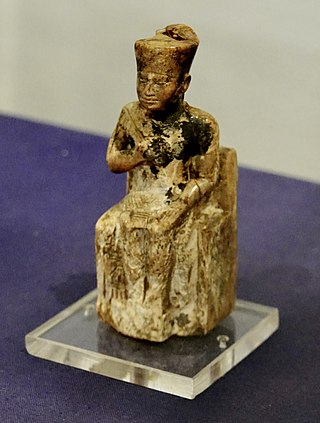
The Khufu Statuette or the Ivory figurine of Khufu is an ancient Egyptian statue. Historically and archaeologically significant, it was found in 1903 by Sir William Matthew Flinders Petrie during excavation of Kom el-Sultan in Abydos, Egypt. It depicts Khufu, a Pharaoh of the Fourth dynasty, and the builder of the Great Pyramid, though it may have been carved much later, in the Twenty-Sixth Dynasty, 664 BC–525 BC.

The Department of Egyptian Antiquities of the Louvre is a department of the Louvre that is responsible for artifacts from the Nile civilizations which date from 4,000 BC to the 4th century. The collection, comprising over 50,000 pieces, is among the world's largest, overviews Egyptian life spanning Ancient Egypt, the Middle Kingdom, the New Kingdom, Coptic art, and the Roman, Ptolemaic, and Byzantine periods.
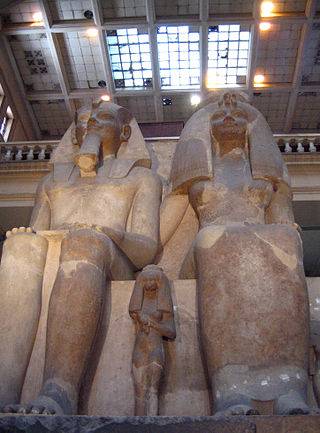
The colossal statue of Amenhotep III and Tiye is a monolith group statue of Egyptian pharaoh Amenhotep III of the eighteenth dynasty, his Great Royal Wife Tiye, and three of their daughters. It is the largest known dyad ever carved. The statue originally stood in Medinet Habu, Western Thebes; today it is the centerpiece of the main hall of the Egyptian Museum in Cairo.

The Statuette of the lady Tiye is a wooden statue of a high-status woman from the reign of Amenhotep III to Akhenaten ; Dynasty 18 of the New Kingdom of ancient Egypt. Believed to depict a leading servant of the powerful Great Royal Wife Tiye, her title has been variously translated over the years as "Chief of Weavers" / "Chief of the Household" / "mistress of the harim". It is one of only about 160 wooden statues discovered from the New Kingdom. It currently resides in the Metropolitan Museum of Art.
